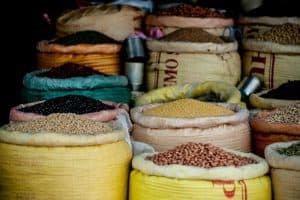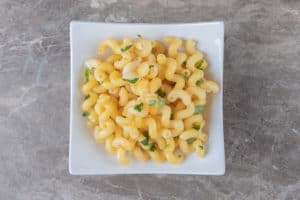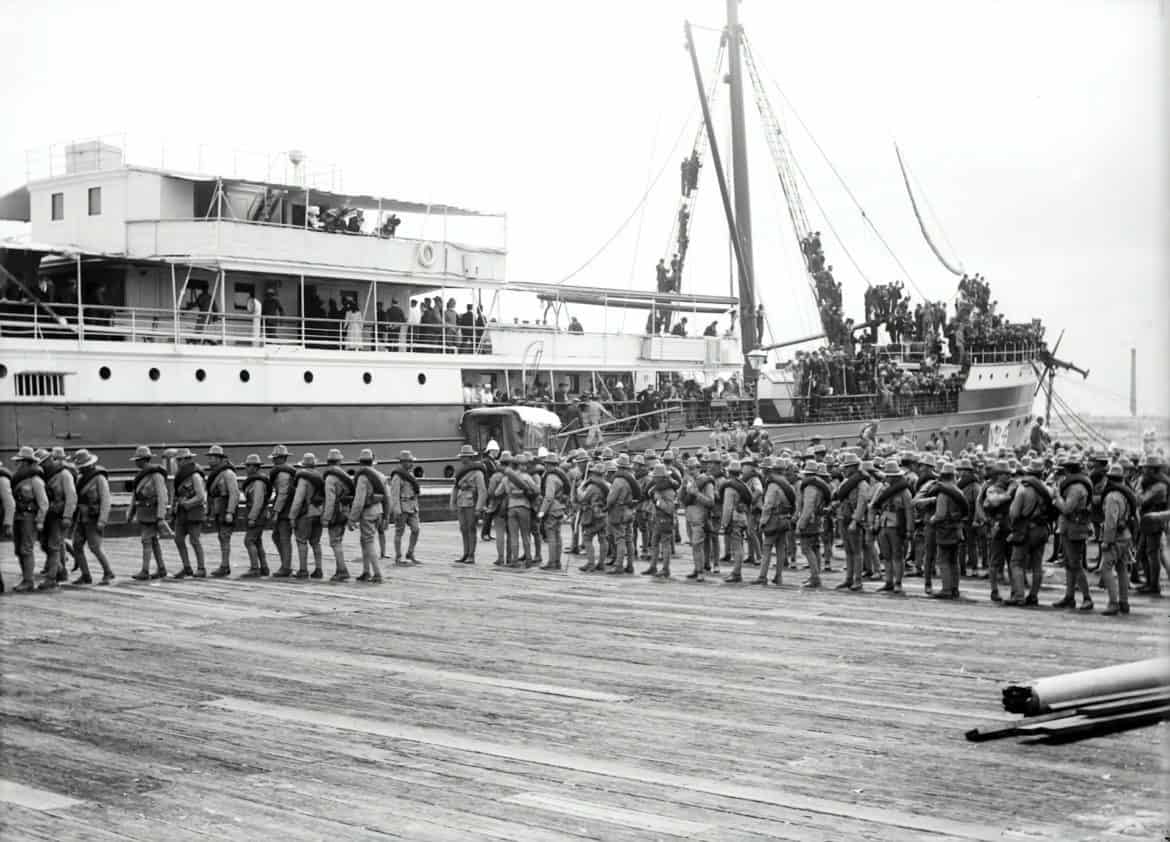Following up from our exploration of food during WW2, having already touched on the impact of wartime cuisine on contemporary English gastronomy and what English people ate during the conflict. Now, we aim to broaden the lens, taking you through the various aspects of this topic. We’ll explore the far-reaching effects of the war on agriculture and how food became a pivotal part of war strategies. From the fields where food was grown to the frontlines where it was consumed. We’ll uncover how different countries met the challenges of feeding their populations and armies. This journey reveals the intricate connections between food and the war, showcasing its significance in a global context.
Agricultural Changes and Challenges in Food During WW2

During the war, agricultural production faced considerable challenges. The trade of grains, crucial to global food supply, saw a drastic reduction, particularly in coarse grains, which fell by over half between 1939 and 1944. This decrease had a substantial impact on food consumption globally. Countries like Great Britain tackled these shortages by increasing domestic production and altering diets to maintain pre-war consumption levels. In contrast, Germany’s food scarcity partly motivated its invasion of the Soviet Union and the enforced export of food from occupied countries for German consumption.
After the war, the United States emerged as a significant exporter of agricultural products, while European countries focused on self-sufficiency to safeguard against future trade disruptions. This period saw the implementation of various state regulations and agricultural policies, which significantly influenced post-war agricultural development. For instance, in Great Britain, state intervention during the war led to increased production, particularly in terms of input imports. Conversely, in Austria, despite strict state control, there was a decline in production, although it did encourage technological change.
Different countries responded to the agricultural challenges posed by the war in unique ways, conditioned by their national circumstances. In Spain, for example, the transition from a liberal to a regulated agricultural sector post-1935 was marked by a significant drop in production levels due to exhaustive state intervention and a decline in input imports. In Hungary, the agricultural intervention measures during the war continued under Communist governments to ensure food supply, leading eventually to collectivisation. These interventions, although varied in approach and effectiveness, underlined a common theme: the move away from agricultural laissez-faire and towards greater state involvement in stabilizing prices and markets, and increasing farmer incomes.
Innovations in Technology and Preservation of Food During WW2

One of the most widespread innovations during the war was the massive upsurge in home canning and food preservation. American homemakers preserved a staggering 4.1 billion containers of food during WW2. This represented nearly half of all canned vegetables and two-thirds of canned fruits for civilian use in that year. The Victory Garden program, encouraged by the government, led to a surge in home-grown produce, which was then preserved through canning. This practice continued even after the war as the United States sent food and supplies overseas to help rebuild war-torn countries.
A significant technological breakthrough with origins in wartime was the development of the microwave oven. The cavity magnetron, a device crucial for radar technology during the war, eventually found a place in American homes as the core technology behind microwave ovens. The ability to produce microwaves revolutionized how food was prepared, making it quicker and more convenient. This technology, initially used for military purposes, became a common household appliance by the 1970s and 1980s, forever changing the way food is heated and prepared.
Beyond food preparation, radar technology, essential for World War II, also became a critical tool in meteorology. Post-war, radar was used to track rainfall and storm systems, significantly advancing the ability to predict weather patterns and influencing how people planned for daily weather changes.
Although not directly related to food during WW2, the war also accelerated the development of computing technology. The ENIAC, one of the first general-purpose computers, originally designed for military purposes, was completed in 1945 and released to the public in 1946. This marked a significant milestone in computing history, leading to the development of smaller, more powerful, and affordable computers that eventually became integral to various aspects of life, including food production and distribution.
Food as a Strategic Resource
In WWI and WWII, Britain’s naval blockades disrupted enemy economies, especially Germany’s, by restricting the flow of food during WW2. This strategy was pivotal in the war effort, leveraging technology and intelligence to halt shipments to Germany, significantly impacting their food supply and overall war capabilities.
On the other side, Germany managed its food during WW2 situation both on the front lines and at home. German soldiers were encouraged to live off the land, appropriating goods from civilians in the areas they conquered. This approach effectively exported hunger to conquered territories. Back in Germany, the government reshaped the nation’s eating habits to acclimate civilians to a wartime diet, emphasizing bread and potatoes and reducing reliance on meats and butter. The Eintopf, or casserole, became a symbol of this strategy, with its preparation and consumption promoted as a sacrifice for the national spirit.
In Britain, the government implemented rationing to ensure equitable distribution of food. This was a response to the threat posed by Nazi U-boats, which aimed to starve the country into defeat by targeting its food supply lines. The Ministry of Food played a pivotal role in this, issuing ration books and controlling the distribution and consumption of food. Rationing led to innovations in cooking as people used limited ingredients to create meals. The ‘Dig for Victory’ campaign was also launched, encouraging people to grow their own food to supplement the rations and counteract shortages caused by the U-boat campaign.
The impact of Food During WW2 in Occupied Territories
In occupied territories during World War II, civilians faced harsh realities under Axis control. These impacts varied significantly across different regions.
In Nazi-occupied Europe, Hitler’s ideology led to brutal policies, especially in Eastern Europe. Poland, occupied by both Nazi Germany and the Soviet Union, approximately 5.6 million people, including Polish Jews, perished due to occupation policies. In areas annexed by Germany, the non-German population faced forced resettlement, Germanization, economic exploitation, and extermination. The Nazi’s “Final Solution” led to the mass extermination of the Jewish population across Europe. This genocidal policy was implemented alongside the military campaign against the Soviet Union, with special mobile killing squads systematically shooting the Jewish population in the conquered territories.
The Japanese occupation in Southeast Asia resulted in the deaths of 4.5 million civilians in countries like Burma, Malaya, Thailand, Indonesia, Indochina, and the Philippines. These regions faced immense hardship, including famine, forced labor, and severe economic downturns. The famine was particularly devastating, with millions starving to death in Vietnam and Java. Forced labor projects, such as the Thailand-Burma Railway, resulted in the deaths of thousands of POWs and Southeast Asian laborers. The occupation also led to the widespread use of “comfort women” and severe malnourishment across the region’s population.
International Food Aid and Relief Efforts

The U.S. played a pivotal role in providing food during WW2 to allied nations. President Franklin D. Roosevelt, foreseeing the inevitability of U.S. involvement in the war, initiated the Lend-Lease Program in March 1941. This program facilitated the transfer of military aid, but significantly, it also included the provision of food aid. The program began by aiding the United Kingdom and was later expanded to include the Soviet Union and other allied nations. By the end of 1941, the U.S. had delivered over a million tons of food to the UK, and this support continued throughout the war. Post-war, the United States further assisted through the United Nations Relief and Rehabilitation Agency, providing over 25 million tonnes of food assistance, which was crucial as Europe struggled to recover from the war’s destruction.
An often overlooked but significant contribution came from Sweden, which launched one of the largest international humanitarian efforts of the war to aid famine-stricken Greece. During the harsh winter of 1941-42, Greece, occupied by Axis powers, faced a devastating famine. In response, Sweden led an international commission responsible for distributing relief shipments throughout the war. This effort was critical in preventing a recurrence of the famine of the previous winter. The operation involved significant risks due to the war conditions, but it successfully distributed over 600,000 tons of food, along with medicines and clothing, thereby averting further disaster.
The Post-War Food Landscape
Many food innovations developed during the war transitioned into civilian life. Items such as powdered cheese and orange juice concentrate, initially created for military purposes, became commonplace in households. For instance, powdered cheese, developed to ship dairy more efficiently, led to products like Cheetos in 1948. Similarly, the perfected process for orange juice concentrate during the war quickly found its way into consumer markets with products like Minute Maid.
Post-war, Americans adapted their diets due to the influence of wartime food. The popularity of items like Kraft macaroni and cheese, which boomed during the war due to its cost-effectiveness and ease of preparation, continued. Stuffed peppers and fruit cobblers, which were ration-friendly, remained popular due to their simplicity and use of available ingredients. These items reflect a blend of necessity and innovation that characterized the wartime culinary scene.
The war catalyzed the United States’ rise as a dominant global economic power. This newfound status brought significant changes to global food commerce and trade. By the end of the war, the U.S. was responsible for more than half of the world’s manufactured goods and held a major share of global gold reserves. The Bretton Woods Conference in 1944 established the U.S. dollar as the new reserve currency, reflecting this shift in economic power. Furthermore, the post-war economic boom in the U.S. saw increased production and export of goods, including food products, influencing global markets and consumption patterns.

Wrapping up the post, we couldn’t help but share one of our tours with the most influences of the wartime. For those interested in experiencing these influences firsthand, the London Food Tour offer a fantastic opportunity. The guides, knowledgeable and passionate, will undoubtedly share fascinating anecdotes that bring to life how World War II reshaped our culinary world.
